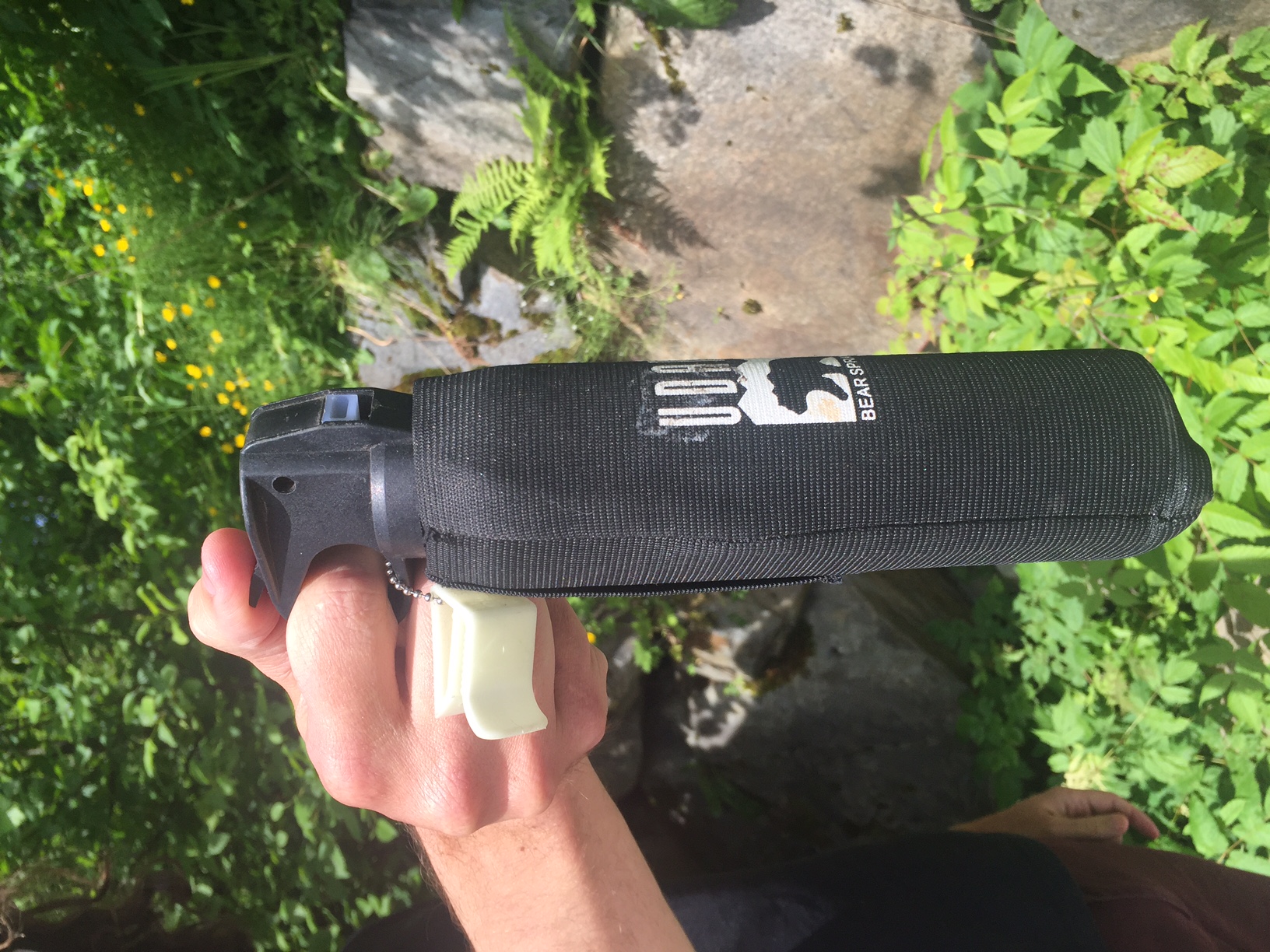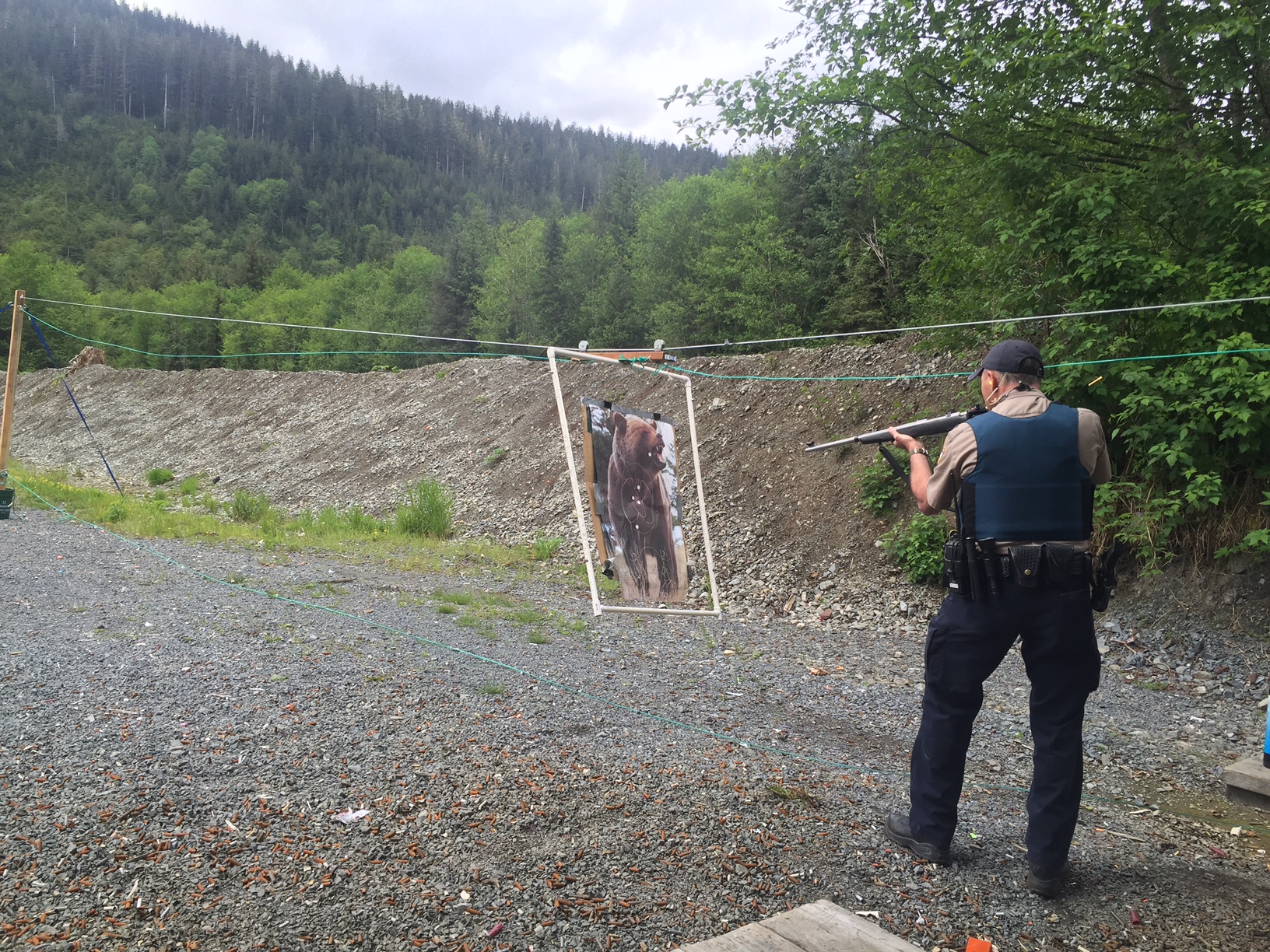The extremely mild winter means bears have been out and about earlier than usual this year. So far, there’ve been two bear attacks in Southeast Alaska, and summer is just getting started. KCAW’s Brielle Schaeffer decided this was the perfect time to try her hand at bear spray.

At the Tony Hrebar Memorial Shooting Range in Sitka, the U.S. Forest Service is training its seasonal employees to use guns and pepper spray as bear protection. Jacquie Foss is a soil scientist for the forest service in Sitka. She gave me a lesson in how to use pepper spray against a charging bear.
“We pull it out. We pop the top off with our hand supporting the base then out, forward, spray,” Foss said.
Several paper targets with pictures of big brown bears are propped up with PVC pipes and placed throughout the range. One target is rigged to a pulley to make it move.
Foss recommends moving to the side while still spraying forward to get out of the way.
“Bears have a lot of inertia so when something gets hit in the face with pepper spray it’s going to disable them possibly,” Foss said. “You don’t want to be in front of essentially a freight train.”
Biologists have found that pepper spray has a better success rate than firearms. According to a study in the “Journal of Wildlife Management,”a person’s chance of getting seriously injured from a charging grizzly doubles when bullets are shot compared to when bear spray is deployed.
Bear pepper spray is way more potent than mace. And that’s why we’re practicing with inert cans of compressed air.
“They’re not cheap, probably 15 bucks but it’s worth it if you’re going to carry it to see how far it goes this says 40 feet but they’re really effective maybe at 25,” Foss said.
Foss stressed that bear spray is NOT a repellant like bug dope. It doesn’t make the bear stay away.
“It distracts the bear enough to stop any negative behavior so that you can leave,” Foss explained.

She said once it’s out of the can it’s not really a deterrent anymore. It can actually be an attractant so it’s best to get out of there and let others on the trail know. Getting a direct spray on the bear is also important. I talked to Alaska Wildlife Trooper Kyle Ferguson. As part of law enforcement training, he had to get pepper sprayed.
“There’s a difference having been sprayed myself having the full on blast effect at close range versus the residual mist effect,” Ferguson said.
Ferguson said the first 15 to 20 minutes after he got sprayed were “terrifically uncomfortable.” His whole face burned and he was involuntarily flowing snot and tears. But, another officer wiped it away and was OK. He was more bothered by the liquid in his eyes. The point, he says, is that the spray can have varying effects on different people– and bears. They have a higher pain tolerance, too.
Ferguson recommended getting two cans of bear spray and using one as a tester to see how it feels to be around that concentrated amount of pepper. He said practice, in this sense, really makes perfect.
“The thing about bear spray is a lot of people, in my experience, carry it and carry it thinking, ‘here’s how you take the safety tab off. This will be great if I ever need it,'” Ferguson said. “If I apply that same logic to a gun, I’m probably not going to prevail in an encounter where I need a gun.”
Now, it’s my turn to give it a shot. I get coached by Joe Serio, a biological technician with the forest service.
“You’re really going to want to try and use the pepper spray at the best opportunity you can,” Serio said. “You have it out, you have it ready to go in case the bear does charge.”
He’d had to use bear spray out in the field before and it worked. A few years ago, he was working at a sockeye weir on Redoubt Lake, south of Sitka.
“We nicknamed this particular bear Sly we’d been seeing her for a few years we called her Sly because she was real sneaky,” Serio said. “One day we had our heads down and she showed up behind the weir. We decided deploying the pepper spray she ended up moving away from us.”
He said the bear spray kept them safe and saved the bear’s life. While pepper spray is an effective tool against aggressive bears, Ferguson says people should still be aware. If you come across a bear on a trail make your presence known– wave your arms, make noise. Never run from a bear but slowly try to back out of the area.




